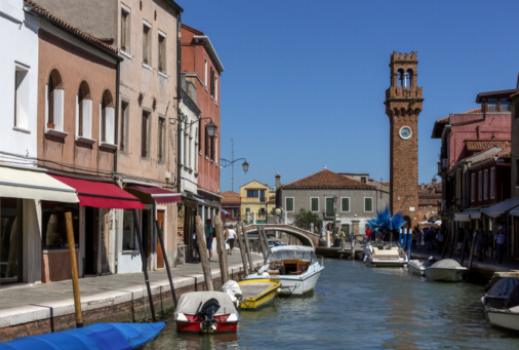Nestled in the Venetian lagoon, the island of Murano has been synonymous with exquisite glassmaking for centuries. From its humble beginnings in the sands of the Adriatic coast, Murano has evolved into a renowned hub of artistic craftsmanship. The intricate process of transforming raw materials into stunning glass pieces is a true testament to the skill and dedication of the master glassmakers who have upheld this ancient tradition. Join us on a journey through the mesmerizing world of Murano glassmaking, where innovation and tradition collide to create timeless works of art.

Techniques and Tools Used in Glassmaking
Glassmaking in Murano is a delicate and intricate process that has been perfected over centuries. The techniques and tools used in this art form play a crucial role in creating stunning pieces of glass art.
One of the key techniques used in glassmaking is called "molding," where molten glass is poured into a mold to create a specific shape. Another technique is "blowing," where a glassmaker blows air into a molten glass blob to create a hollow form. "Lathing" is a technique used to carve and shape the glass while it is still hot, allowing for intricate designs to be created.
Various tools are utilized in glassmaking to help shape and manipulate the glass. Tools such as tweezers, shears, and jacks are used to manipulate the molten glass, while molds help create specific shapes and patterns. The "pontil rod" is used to hold the glass piece while it is being worked on, allowing the glassmaker to control and shape the glass more effectively.
Overall, the techniques and tools used in glassmaking in Murano are essential in creating the intricate and beautiful glass pieces that the island is famous for. Master glassmakers in Murano have honed their skills over generations, passing down their knowledge and expertise to continue the tradition of glassmaking in this unique and historic location.
Role of Master Glassmakers in Murano
Master glassmakers in Murano play a crucial role in the glassmaking process. These highly skilled artisans have spent years honing their craft and mastering the techniques passed down through generations. They are responsible for overseeing every step of the glassmaking process, from gathering the raw materials to shaping and blowing the glass into intricate designs. The expertise and precision of master glassmakers are essential in creating the high-quality, intricate pieces for which Murano glass is known. Their artistry and attention to detail contribute to the unique and exquisite beauty of Murano glass pieces.
Traditional vs. Modern Glassmaking Methods
Traditional vs. Modern Glassmaking Methods
Glassmaking in Murano has a rich history that dates back centuries, with traditional methods being passed down from generation to generation. These methods involve the use of basic tools such as blowpipes, shears, and molds, as well as techniques like hand blowing and shaping.
In contrast, modern glassmaking methods have incorporated advanced technology and machinery to streamline the production process. This includes the use of electric furnaces, computer-aided design software, and automated shaping techniques.
While traditional glassmaking methods emphasize the skill and artistry of the master glassmakers, modern methods focus on efficiency and precision. Despite these differences, both traditional and modern glassmaking techniques continue to thrive in Murano, producing stunning glass pieces that are highly sought after by collectors and art enthusiasts around the world.
Famous Murano Glass Pieces and Artists
Murano glass has been prized for its beauty and craftsmanship for centuries, with many famous pieces and artists contributing to its rich history. One of the most well-known Murano glass artists is Lino Tagliapietra, whose intricate and innovative pieces have propelled him to international fame. Tagliapietra's work often combines traditional glassmaking techniques with modern design elements, creating truly stunning and unique pieces.
Another renowned Murano glass artist is Archimede Seguso, known for his exquisite and delicate glass sculptures. Seguso's pieces often feature intricate details and vibrant colors, showcasing the skill and artistry that have made Murano glass famous around the world.
In addition to individual artists, there are also several famous Murano glass pieces that have become iconic symbols of the craft. One such piece is the stunning Murano glass chandelier that hangs in the Metropolitan Opera House in New York City. Created by the Barovier family in the 1960s, this chandelier is a magnificent example of the beauty and elegance that Murano glass is known for.
Overall, the famous Murano glass pieces and artists mentioned here are just a few examples of the talent and creativity that have made Murano glass a beloved and enduring art form. Each piece and artist brings something unique and special to the world of glassmaking, showcasing the skill and artistry that have made Murano glass a treasured tradition for generations.
